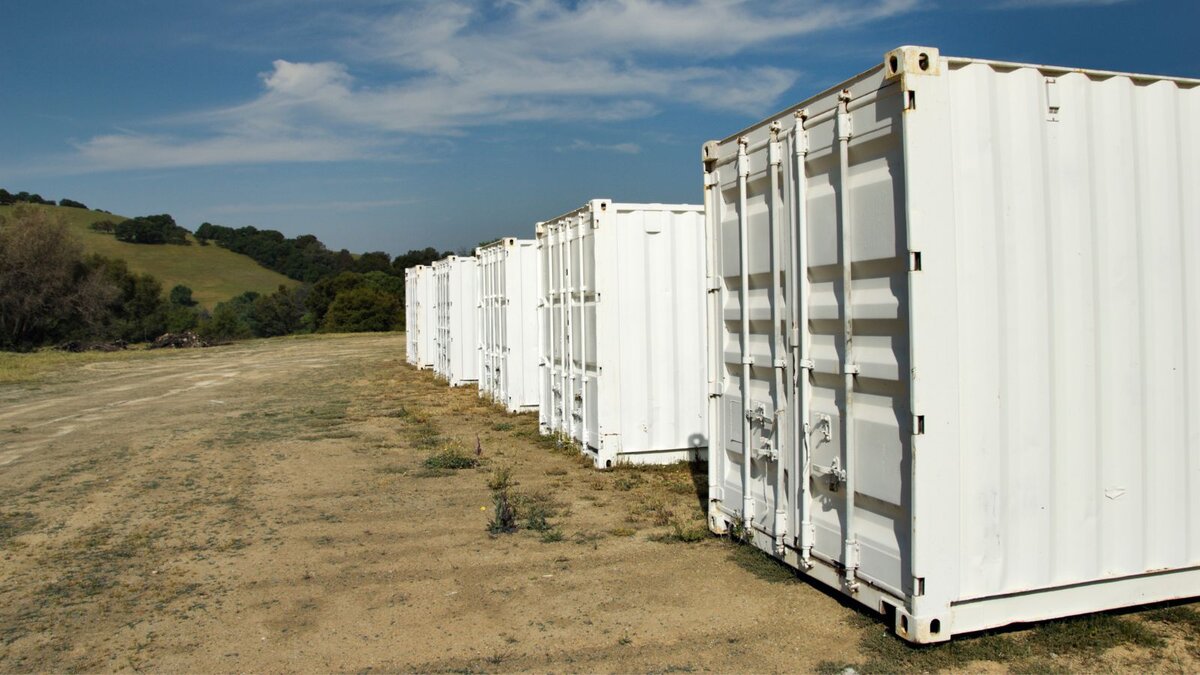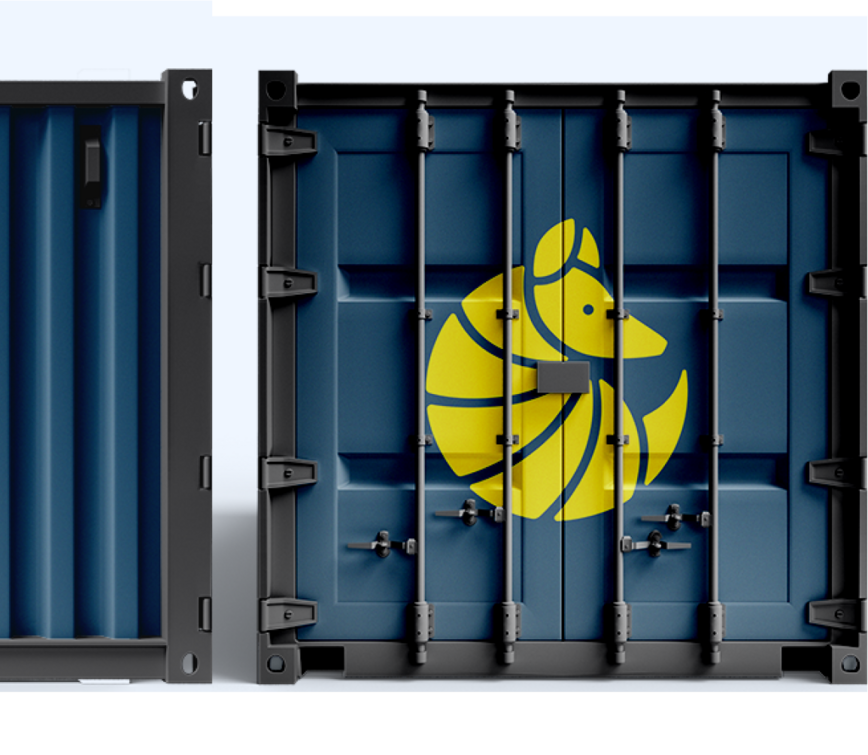Track my order
RESOURCES
Shipping Container Placement Guide: Where to Put Your Shipping Container
Before you decide to buy a shipping container, you need to figure out where you can place this potential purchase. Read more best practices for determining shipping container placement.



You want to buy a shipping container, so you browse the website and pick out a container that suits your needs. That’s it, right? Not quite. Before you decide to buy a shipping container, you need to figure out where you can place this potential purchase.
You don’t want to make the mistake of buying the container first and trying to figure out where to put it only after it has arrived. It will be a lot less stressful to determine your container placement before you’ve finalized the purchase. Read more best practices for determining shipping container placement to ensure that you’re set up for success with your container.
Factors That Will Impact Your Container Placement
Zoning Laws
You may be wondering: Can I legally put a shipping container on my property? Do I need a permit to put a shipping container on my property? Do I have to follow certain rules?
The answer depends. It may differ depending on your state, your county, and what you intend to do with your container. You might find that you can put a shipping container in your backyard as a short-term storage unit, as long as you apply for a temporary permit. You might find that you can put a shipping container in your backyard as a secondary dwelling unit, as long as you put it on a permanent cement foundation.
Alternatively, you might find out that your shipping container plans don’t comply with local laws. You’ll want to find out this important information sooner rather than later. If it’s the case that you’re unable to use a shipping container for your plans, it’s best to put your plans on hold and try to find an alternative solution than suffer the consequences that come with violating these regulations.
Contact your local government offices to get informed about the zoning laws and building codes that you need to abide by. This research will let you know what regulations you will have to follow to place a shipping container on your property — or if you can have one at all.
Delivery Requirements
After you purchase a shipping container, you will typically arrange for a tilt-bed, roll-off truck, or flat-bed truck to deliver and offload the container onto your property.
Why is this important when considering your shipping container placement? Well, these vehicles are very large. A roll-off truck will need 120ft of straight space and 16ft of clearance height. A tilt bed truck will need 100ft of straight space and 16ft of clearance height. If your delivery site can’t offer this type of space, the vehicle won’t be able to drop off your container.
The delivery trucks also need to drive on a solid, secure surface like asphalt, concrete, or dry compacted gravel. If they drive over areas of loose dirt, soft grass, or mud, they could get stuck. These specifications should also help you determine the optimal placement for your container.
Click here to learn more details about what to expect from your shipping container delivery.
Container Size
Another factor that will impact your container placement is container size. You can choose between a 20ft container or a 40ft container for sale (both in standard heights and high-cube height). You will want to make sure that your property has enough clearance for the container size that you intend to purchase.
The container shouldn’t just fit onto your property as-is. You’ll want to have enough space to operate the container as intended. For instance, if you’re going to use your container for equipment storage, you will want to have enough space to load equipment inside, haul equipment outside, and open the container doors fully.
Utility Connections
Are you planning to connect your shipping container to utilities, like the electrical grid or the plumbing system? If so, you will need to be strategic about its placement. The further away your container is from these systems, the more effort and expense you will have to endure to connect them.

How Can You Prep Your Site for Shipping Container Placement?

Make a Level Surface
You will want your container to rest on a flat, level, and compact surface. If you place it on an uneven surface, the components of the container could shift or warp over time. You might notice that you can’t open or close the main doors properly. If you install additional entrance doors or windows, they could suffer from the same problem.
A little bit of site preparation can resolve this problem for your shipping container. You can level the area, remove obstructions (rocks, branches, etc.) and make the soil more compact. And to ensure further stability, you should add an appropriate foundation over it.
Correct the Slopes
While you’ll want the container to rest on a flat, level surface, you will want the surrounding land to slope away from it. This directs water away from your container.
The wrong slope isn’t an insurmountable problem. You can hire professional contractors to grade the land and rectify the slope. This will prep the site for your shipping container.
Choose the Right Foundation
You won’t be finished with your shipping container site preparation until you add a proper foundation. A foundation should give your shipping container some extra stability. This is especially important when your property has a soil type with a lot of moisture in it. Without a foundation, your container could shift or sink when placed directly on top of this soil.
A foundation can also protect the bottom of the container from water damage. A foundation will create a protective barrier between the container and the soil, minimizing its contact with moisture. This should reduce the risk of rusting and keep the container in good condition for much longer.
What type of foundation should you choose? It all depends on how long you intend to keep the shipping container in that location.
Short-Term Foundations
If it’s a short-term placement, one of the foundation options you can choose is called blocking. This is when concrete blocks are placed beneath the corners of the container. If you’re using a 40ft shipping container, you should place additional blocks at the middle points of each side for increased support. You should not use this option when you’re storing heavy items in your container. It’s meant for lighter storage.
A second option that you can consider is wooden beams (often called “railroad ties”). Wooden beams are installed underneath all four corners of the container. If you’re using a 40ft shipping container, you can place an additional beam along the middle for more support. This foundation option is also meant for lighter loads.
Another option is a gravel foundation. The bed of gravel is very effective at facilitating drainage. You can pair a gravel foundation with concrete blocks or wooden beams.
Long-Term Foundations
Is your shipping container going to be a long-term fixture? If so, you should consider a concrete slab foundation. A concrete slab foundation is durable, long-lasting, and very effective. It’s ideal for shipping containers acting as living spaces, like container homes, home offices, and hobby sheds.
Another option that you can consider is pile foundations. These are cylindrical steel or concrete tubes placed beneath the corners of the shipping container. They raise the container off the ground to prevent water intrusion. This style of foundation is best for containers carrying heavy loads. It’s also a solution for sites with softer soil types.
Before you decide to buy a container, go through this placement guide first. Going through each category should help you figure out exactly where you can place your shipping container on your property and how you can prep the site for delivery. Soon you’ll be ready to make your purchase.

About Nina Barango
Nina Barango is an experienced content marketer and container expert with a proven track record in the tech and logistics industry. Having worked with various startups and SMEs, she bridges the world of marketing, tech and shipping containers. When she's not creating content that'll revolutionize global container trade, you can find Nina reading a book or mastering her video editing skills.







Continue Shopping
Loading cart